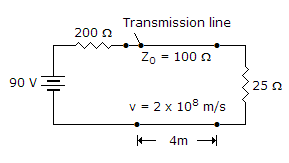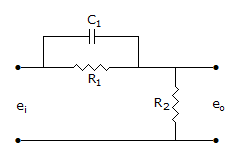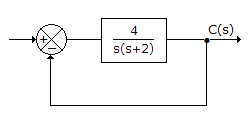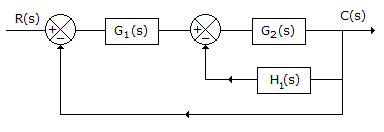Discussion
Home ‣ Electronics and Communication Engineering ‣ Microwave Communication See What Others Are Saying!
- Question
In the given figure the time taken by the wave to make one round trip is

Options- A. 10 ns
- B. 20 ns
- C. 30 ns
- D. 40 ns
- Correct Answer
- 40 ns
Explanation
More questions
- 1. A coaxial RF cable has a characteristic impedance of 50 ? and C equal to 40 pF/m. The inductance is
Options- A. 1 ? H/m
- B. 10 ? H/m
- C. 0.1 ? H/m
- D. 0.01 ? H/m Discuss
Correct Answer: 0.1 ? H/m
Explanation:
 .
.
- 2. The compensator of the given figure is a

Options- A. lag compensator
- B. lead compensator
- C. lag-lead compensator
- D. none of the above Discuss
Correct Answer: lead compensator
Explanation:
Obtain transfer function.- 3. Lines of magnetic field cannot intersect.
Options- A. True
- B. False Discuss
Correct Answer: True
- 4. Radar principle is used in
Options- A. detection of aircraft
- B. burglar alarms
- C. garage door openers
- D. all of the above Discuss
Correct Answer: all of the above
- 5. The noise produced by a resistor is proportional to
Options- A. absolute temperature
- B. (absolute temperature)2
- C.

- D.
 Discuss
Discuss
Correct Answer: absolute temperature
- 6. A memory system of size 16 k bytes is to be designed using memory chips which have 12 address lines and 4 data lines each. The number of such chips required to design the memory system is
Options- A. 2
- B. 4
- C. 8
- D. 18 Discuss
Correct Answer: 8
Explanation:
 .
.
- 7. For the system of the given figure, the damping ratio of closed loop poles is

Options- A. 1.5
- B. 1
- C. 0.5
- D. 0.25 Discuss
Correct Answer: 0.5
Explanation:
The standard form of characteristic equation is .
.
Therefore
 .
.
- 8. For the system in the given figure,


Options- A.

- B.

- C.

- D. none of the above Discuss
Correct Answer:
Explanation:
For inner loop we have transfer function =
Then
 =
=  .
.
- 9. In an integral controller
Options- A. the output is proportional to input
- B. the rate of change of output is proportional to input
- C. the output is proportional to rate of change of input
- D. none of the above Discuss
Correct Answer: the rate of change of output is proportional to input
Explanation:
Output is proportional to integral of input or rate of change of output is proportional to input.- 10. Wave A = 100 sin ?t and wave B = 100 cos ?t. Then
Options- A. rms values of the two waves are equal
- B. rms values of A is more than that of B
- C. rms values of A is less than that of B
- D. rms values of the two waves may or may not be equal Discuss
Correct Answer: rms values of the two waves are equal
Explanation:
Since peak values are equal, their rms values are equal irrespective of phase difference.
Comments
There are no comments.
More in Electronics and Communication Engineering:
Programming
Copyright ©CuriousTab. All rights reserved.
